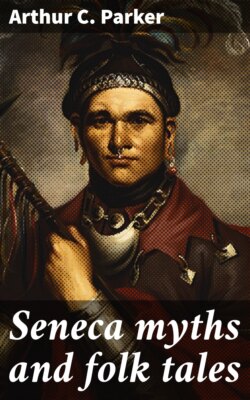Читать книгу Seneca myths and folk tales - Arthur C. Parker - Страница 8
На сайте Литреса книга снята с продажи.
LITERAL TRANSLATION.
ОглавлениеTable of Contents
There were, it seems, so it is said, man-beings dwelling on the other side of the sky. So just in the center of their village the lodge of the chief stood, wherein lived his family, consisting of his wife and one child, that they two had. He was surprised that then he began to become lonesome. Now furthermore, he the Ancient was very lean, his bones having become dried, and the cause of this condition was that they two had the child, and one would think, judging from the circumstances that he was jealous.
Such is the beginning of the Seneca version of Iroquoian cosmology as given by J. N. B. Hewitt in the 21st Report of the Bureau of Ethnology. This faithful record of a native text and its translation is literally a most painstaking work involving the closest attention to the minor sounds in the language, in order that each word may be phonetically recorded. To wade through this literal translation from the beginning to the end of the myth would be too tedious for anyone but an enthusiastic student of native tongues. To the majority of readers it would be a forbidding task. Even to follow the involved language and grammatical forms of the close literal translation would tire the mind of anyone whose mother tongue was not that of the text.
A free translation, therefore becomes a prime necessity, but this must not disturb the original thought. Just how to make such a translation honestly becomes a problem beset with difficulty. Our plan is to smooth out the language, divest it of its awkward arrangement, and allow the thought to flow on. Let us attempt this in the following:
